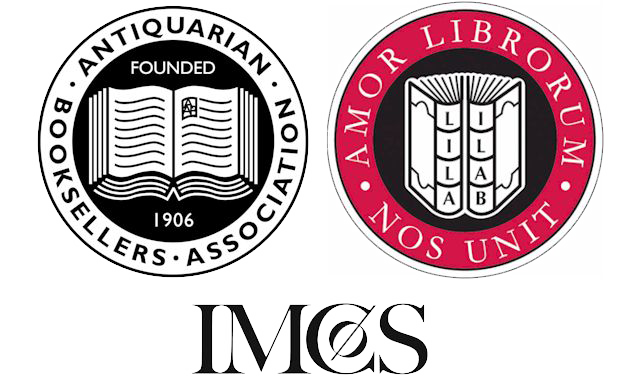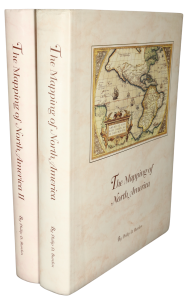Rare Maps and Prints
- World & Celestial
- North America
- West Indies, South & Central America
- British Isles
- British Isles
- English counties
- Large-scale
- Bedfordshire
- Berkshire
- Buckinghamshire
- Cambridgeshire
- Cheshire
- Cornwall
- Cumberland
- Derbyshire
- Devon
- Dorset
- Durham
- Essex
- Gloucestershire
- Hampshire
- Herefordshire
- Hertfordshire
- Huntingdonshire
- Islands
- Kent
- Lancashire
- Leicestershire
- Lincolnshire
- Middlesex
- Norfolk
- Northamptonshire
- Northumberland
- Nottinghamshire
- Oxfordshire
- Rutland
- Shropshire
- Somerset
- Staffordshire
- Suffolk
- Surrey
- Sussex
- Warwickshire
- Westmoreland
- Wiltshire
- Worcestershire
- Yorkshire
- Wales
- Scotland
- Ireland
- Western Europe
- Eastern Europe
- Middle East
- Africa
- Asia
- Australasia & Pacific
- Decorative Prints
- Title Pages
Mr. Philip D. Burden
P.O. Box 863,
Chalfont St. Giles, Bucks HP6 9HD,
UNITED KINGDOM
Tel: +44 (0) 1494 76 33 13
Email: enquiries@caburden.com
A previously unrecorded, separately issued, wall map of the U.S. by Boston mathematician, Osgood Carleton (1742-1816). Known as America’s first professional cartographer. Carleton served as navigator and artillerist for the English in the French and Indian Wars and then as a patriot in the Revolutionary War, where he fought at the battle of Bunker Hill. Later, he put his knowledge to use by founding a school for navigation, mathematics and cartography in Boston. There he produced a number of important maps, including ones of Massachusetts and Maine. He also issued a map of the United States in 1791, which was revised and reissued in 1806, and then again in this later version.
This possibly unique map is an excellent example of early American cartography. For his 1806 map, Carleton updated his original 1791 map based using information from Arrowsmith’s important 1804 map, though Carleton added considerable new information. The updated information was especially concentrated in New England, where Carleton was an authority, and in Ohio and the “Indiana Territory,” where recent surveys and developments are noted. The old Northwest Territory had been broken up considerably by the time the 1806 map was issued, which was clearly documented by Carleton. In Ohio was indicated the Army Lands and the Seven Ranges; to Ohio’s north was the “Michigan Territory” and to the west the “Indiana Territory.” Also depicted was the “District of Maine” (still part of Massachusetts) and a part of the new Louisiana Territory located on the west of the Mississippi.
This previously unknown version of Carleton’s wall map though close to the 1806 map, was completely re-engraved. While much remains the same, much has changed, with a number of interesting modifications.
The information in New England especially is improved, as can be seen in the depiction of Lake Champlain. A table of ports of entry has been removed from the top and on this map Carleton removes the elevated plateau shown previously on the Michigan Peninsula, a remnant of a geographic mistake dating back to the late seventeenth century. Another geographic mistake in the region, from the eighteenth century, remains however, for Carleton shows the non-existent island “Philappeaux.” A large label, “United States Land” appears in the territory shown above the narrow Mississippi Territory, with a smaller label stating it as “Georgia Co.” Only the Georgia label appeared on the 1806 map. Carleton also made other changes as he got new information, for instance adding “Newark” in place of Fort George at the northern end of the Niagara River.
Even more noticeable is the increase in the number of postal roads and postal towns. That he would focus on this data is something that Carleton specifically stated in this edition of the map. Also of note is the total redrawing of the Mississippi and Missouri waterways and other information in the northwestern part of this map. The 1806 map followed Arrowsmith closely, whereas this map is much closer to the corrected information that came back with Lewis & Clark (though it is somewhat sketchy in detail). It may be that Carleton got access to a map based on this expedition’s work and used it to issue this updated map. No engraver, nor publisher, nor date are given on this map, but the population figures listed in the table at the bottom are identical to the 1806 map, so it was probably issued before the next census was published.
Throughout the map, Carleton shows rivers, mountains (though somewhat crudely), swamps, county names, mines, portages, Indian tribe names. As noted, one of the main focuses of the map was the early postal system, so Carleton includes all the “Post Towns” and the “Postal Roads” between them, all marked with distances from Washington. At the bottom is an interesting inset table: “A Table shewing the Length and Breadth of each State, the Latitude & Longitude of the chief Towns: Their distance from Washington, and Population of the United States of America.” It is very similar to the 1806 table, though it contains a listing for “Indian” territory instead of “Indiana” territory as on the earlier table. This is an important and previously unrecorded map by one of the first native American cartographers. As far as we can tell, this is not listed in any reference nor collection, including Phillips and Rumsey. Cf. Ristow ’85; p. 68.
This possibly unique map is an excellent example of early American cartography. For his 1806 map, Carleton updated his original 1791 map based using information from Arrowsmith’s important 1804 map, though Carleton added considerable new information. The updated information was especially concentrated in New England, where Carleton was an authority, and in Ohio and the “Indiana Territory,” where recent surveys and developments are noted. The old Northwest Territory had been broken up considerably by the time the 1806 map was issued, which was clearly documented by Carleton. In Ohio was indicated the Army Lands and the Seven Ranges; to Ohio’s north was the “Michigan Territory” and to the west the “Indiana Territory.” Also depicted was the “District of Maine” (still part of Massachusetts) and a part of the new Louisiana Territory located on the west of the Mississippi.
This previously unknown version of Carleton’s wall map though close to the 1806 map, was completely re-engraved. While much remains the same, much has changed, with a number of interesting modifications.
The information in New England especially is improved, as can be seen in the depiction of Lake Champlain. A table of ports of entry has been removed from the top and on this map Carleton removes the elevated plateau shown previously on the Michigan Peninsula, a remnant of a geographic mistake dating back to the late seventeenth century. Another geographic mistake in the region, from the eighteenth century, remains however, for Carleton shows the non-existent island “Philappeaux.” A large label, “United States Land” appears in the territory shown above the narrow Mississippi Territory, with a smaller label stating it as “Georgia Co.” Only the Georgia label appeared on the 1806 map. Carleton also made other changes as he got new information, for instance adding “Newark” in place of Fort George at the northern end of the Niagara River.
Even more noticeable is the increase in the number of postal roads and postal towns. That he would focus on this data is something that Carleton specifically stated in this edition of the map. Also of note is the total redrawing of the Mississippi and Missouri waterways and other information in the northwestern part of this map. The 1806 map followed Arrowsmith closely, whereas this map is much closer to the corrected information that came back with Lewis & Clark (though it is somewhat sketchy in detail). It may be that Carleton got access to a map based on this expedition’s work and used it to issue this updated map. No engraver, nor publisher, nor date are given on this map, but the population figures listed in the table at the bottom are identical to the 1806 map, so it was probably issued before the next census was published.
Throughout the map, Carleton shows rivers, mountains (though somewhat crudely), swamps, county names, mines, portages, Indian tribe names. As noted, one of the main focuses of the map was the early postal system, so Carleton includes all the “Post Towns” and the “Postal Roads” between them, all marked with distances from Washington. At the bottom is an interesting inset table: “A Table shewing the Length and Breadth of each State, the Latitude & Longitude of the chief Towns: Their distance from Washington, and Population of the United States of America.” It is very similar to the 1806 table, though it contains a listing for “Indian” territory instead of “Indiana” territory as on the earlier table. This is an important and previously unrecorded map by one of the first native American cartographers. As far as we can tell, this is not listed in any reference nor collection, including Phillips and Rumsey. Cf. Ristow ’85; p. 68.
CARLETON, Osgood
A New Map of the United States of America Including Part of Louisiana Part of Canada & of East Florida and the Whole of West Florida ...
Boston, c.1806
1530 x 1650 mm., early outline colour. With surface wear, cracks, stains and old mildew stains. Expertly conserved: removed from old backing, cleaned, deacidified, and reattached to new linen. Overall condition and appearance very good for wall map of this period.
Stock number: 3777
SOLD






